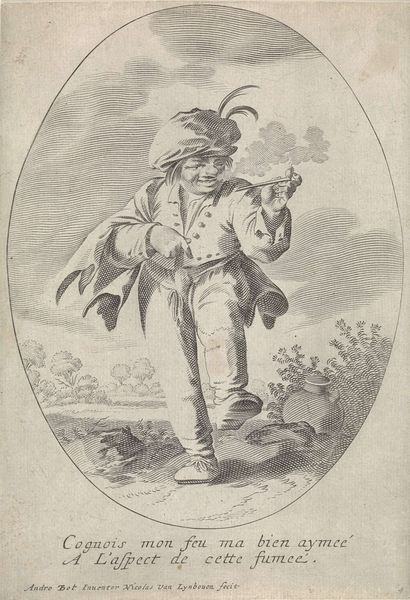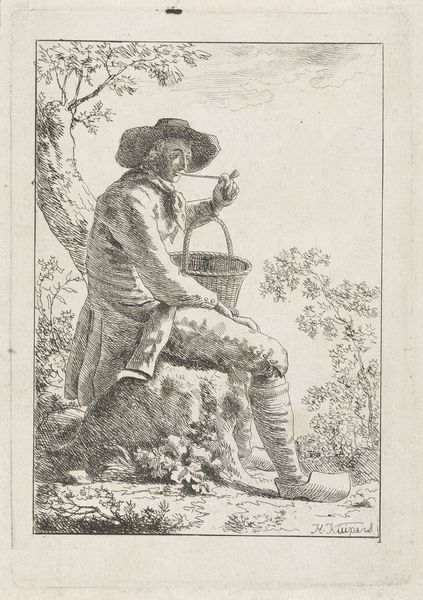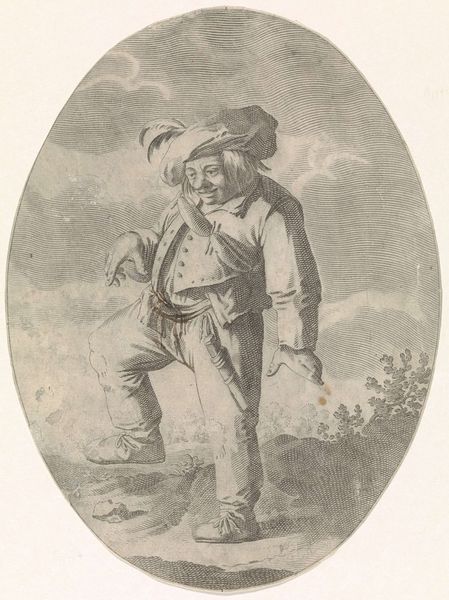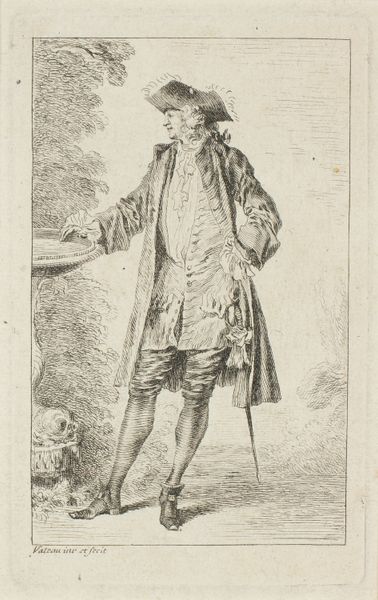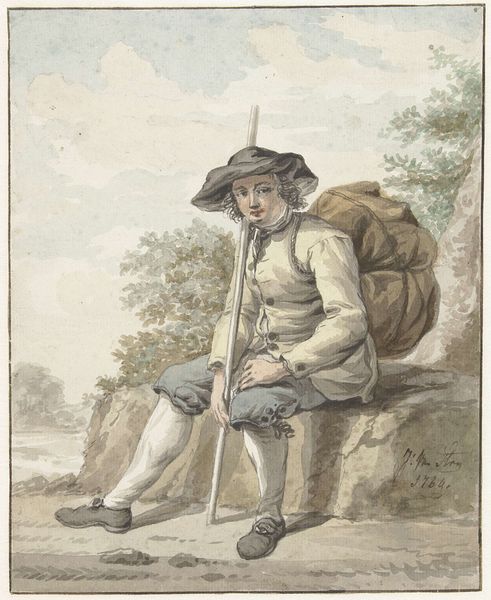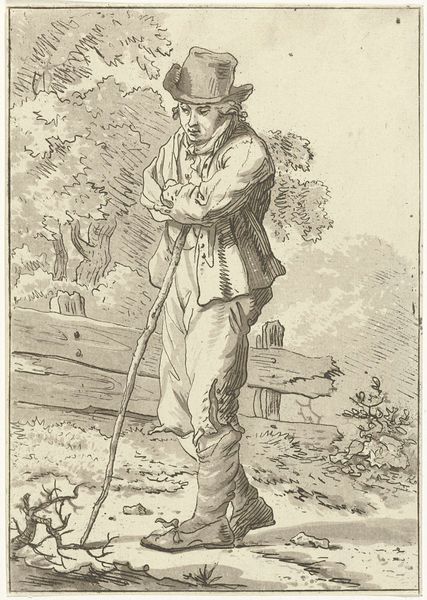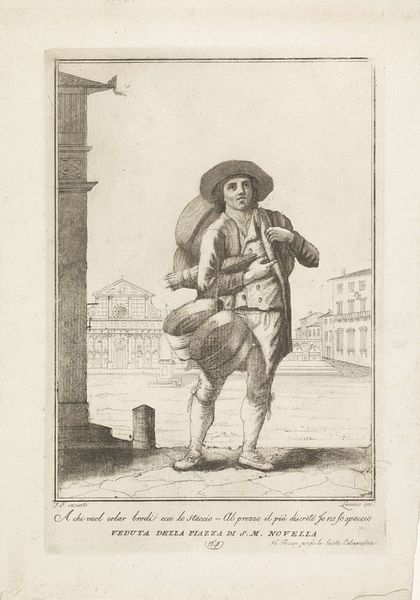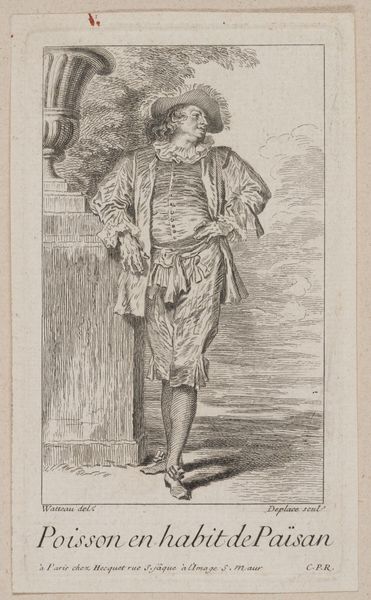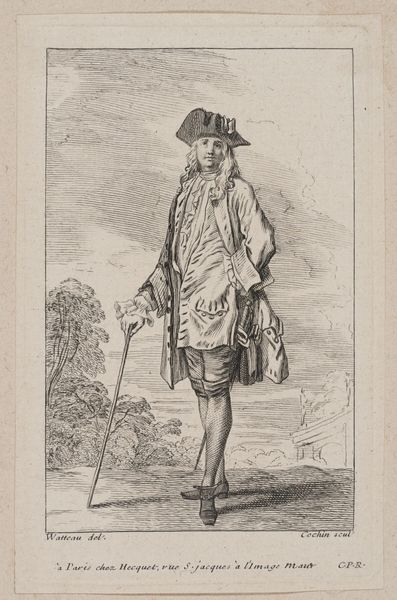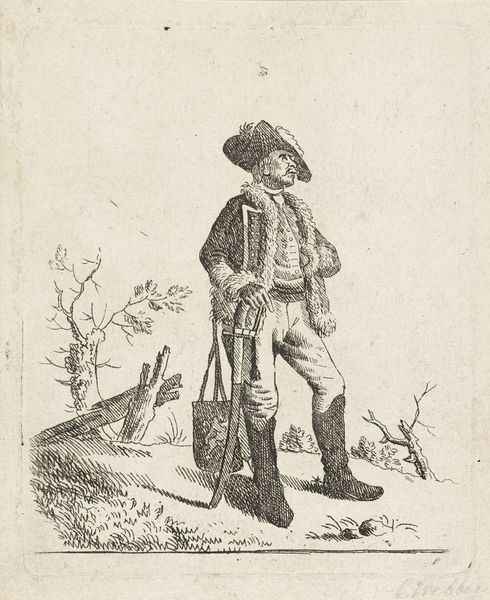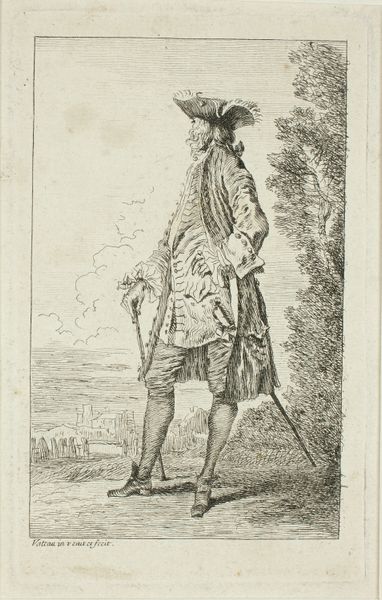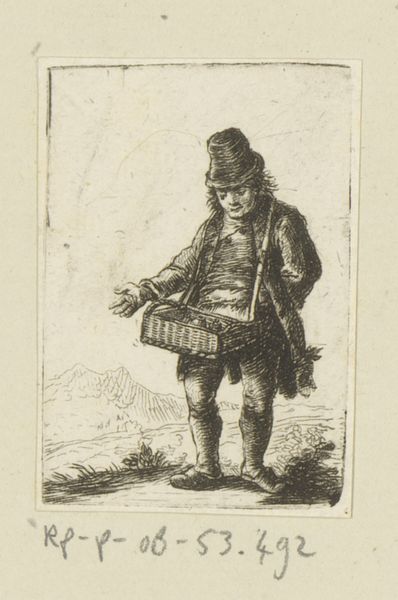
drawing, paper, ink
#
portrait
#
pencil drawn
#
drawing
#
imaginative character sketch
#
light pencil work
#
quirky sketch
#
pencil sketch
#
landscape
#
paper
#
personal sketchbook
#
ink
#
romanticism
#
sketchbook drawing
#
pencil work
#
genre-painting
#
sketchbook art
#
fantasy sketch
Dimensions: height 148 mm, width 121 mm
Copyright: Rijks Museum: Open Domain
Editor: Here we have Abraham van Strij's "Standing Man, Arms Folded, Facing Left," likely made sometime between 1763 and 1826, done in ink and pencil on paper. It’s a simple sketch, but he has a very particular stance and a slightly defiant expression. What’s your read on this figure? Curator: He does, doesn’t he? The pose, arms crossed, immediately reads as defensive, even resistant. Consider the era. Van Strij lived through immense social and political upheaval—the rise of revolutionary thought, shifts in class structures... Do you see any echoes of that? Editor: I guess the Romantic era was a turbulent one. How would that affect how artists would portray people at the time? Curator: Exactly! How might this portrayal challenge or subvert traditional representations of power and status? His stance might be read as a quiet form of rebellion against established norms. Also notice his garb, less the attire of landed gentry, more the modest garb of the emerging bourgeoise? It suggests a claim to a different kind of authority, one perhaps earned rather than inherited. Editor: He does look a little different from noble portraits, it is almost genre-scene like. That’s an interesting perspective, looking at his clothes as a statement, and not just a recording of the world! Curator: Precisely. By focusing on the individual—especially one presented outside the traditional heroic narratives—the artist subtly democratizes the act of portraiture. So how can we look at that quiet assertion of self in connection to how this era started dismantling traditional hierarchies? What can it tell us? Editor: Well, I never thought a quick sketch could say so much about social issues back then. Thanks for pointing all of that out! Curator: It is a pleasure, it's through those visual conversations that we reveal how profoundly entangled art is with the human narrative of struggle, ambition, and change.
Comments
No comments
Be the first to comment and join the conversation on the ultimate creative platform.
